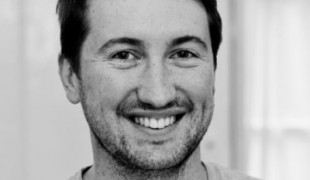- 3652
- 281
- 7
- 7
- 0
- Help Ukraine
About the solution
Riley Saban lives with cerebral palsy, which makes him difficult to perform certain tasks and unable to be independent. Riley was being evaluated by an eye tracking device (through which he also communicates).
That said, his friend and biomedical engineer, Jordan Nguyen, promised to help him by trying to create a device that would give him "telekinetic control", through a band that will respond to the movement of his eyes.
The team worked to control Riley's most reliable voluntary movements to allow him to turn electrical objects on and off, for example. Using electrooculography (EOG), Riley's brain activity corresponding to four different eye movements was detected, transmitted to a computer, interpreted by artificial intelligence and used to control the devices.
Later, Jordan Nguyen decided to go one step further and try to get Riley to control a car. To achieve this goal, he asked Darren Lomman, head of innovation and design at the Ability Center, for help. For driving, eye movement signals were picked up by the EOG, amplified and sent over the cloud to a computer in front of the car. The computer was connected via USB to control the engines, and the handles on the front of the vehicle scanned the area ahead.
This innovation was introduced in the ABC catalyst program trying to answer the question "Can technology give us super powers?". Apparently the answer is yes.
Story adapted from https://createdigital.org.au/jordan-nguyen-mind-controlled-tech/
https://www.youtube.com/watch?v=pO3TNTno9fs
This solution shall not include mention to the use of drugs, chemicals or biologicals (including food); invasive devices; offensive, commercial or inherently dangerous content. This solution was not medically validated. Proceed with caution! If you have any doubts, please consult with a health professional.
DISCLAIMER: This story was written by someone who is not the author of the solution, therefore please be advised that, although it was written with the utmost respect for the innovation and the innovator, there can be some incorrect statements. If you find any errors please contact the patient Innovation team via info@patient-innovation.com
-
-
783
-
9
-
24220

Mother creates device to help his son to walk again
WALKING: Walking
WALKING WITH A WALKING AID: Walking with a walking aid
Cerebral Palsy
Assistive Daily Life Device (to help ADL)
Body-Worn solutions (Clothing, accessories, shoes, sensors...)
Walking Aid (wheelchair/walker/crutches)
Impaired movement
Restoring mobility
Managing Neurological Disorders
Maintaining Balance and Mobility
Caregiving Support
Neurology
Pediatrics
Physical Medicine and Rehabilitation
Israel
-
-
-
818
-
4
-
22851

Morph Wheels - Foldable wheels for wheelchairs
MOVING IN A WHEELCHAIR: Moving using a wheelchair.
CAREGIVING
Traveling
Urban exploration
Assistive Daily Life Device (to help ADL)
Walking Aid (wheelchair/walker/crutches)
Restoring mobility
Promoting self-management
Preventing (Vaccination, Protection, Falls, Research/Mapping)
Caregiving Support
Neurology
Orthopedics
Rheumatology
Mobility issues
United Kingdom
-
-
-
615
-
3
-
18493

Paraplegic invents Do-It-Yourself Handcycle combining a bycicle and a wheelchair
MOVING IN A WHEELCHAIR: Moving using a wheelchair.
Cycling
Riding
Urban exploration
Walking Aid (wheelchair/walker/crutches)
Assistive Daily Life Device (to help ADL)
Paralysis of the legs and lower body
Restoring mobility
Promoting self-management
Promoting inclusivity and social integration
Neurology
Physical Medicine and Rehabilitation
Mobility issues
Solutions for Disabled people
Germany
-
 en
en